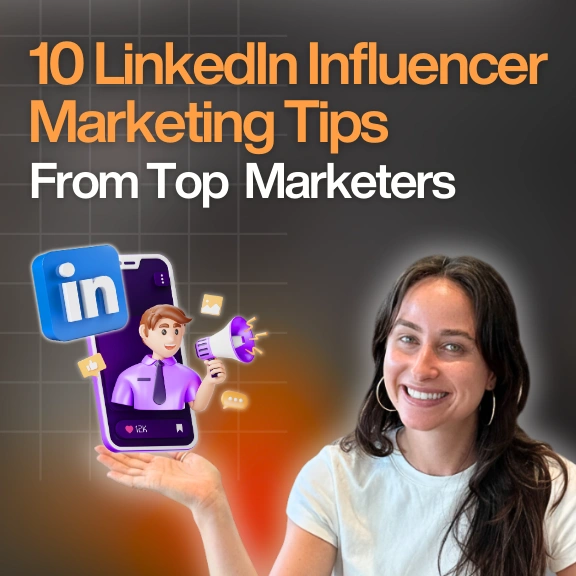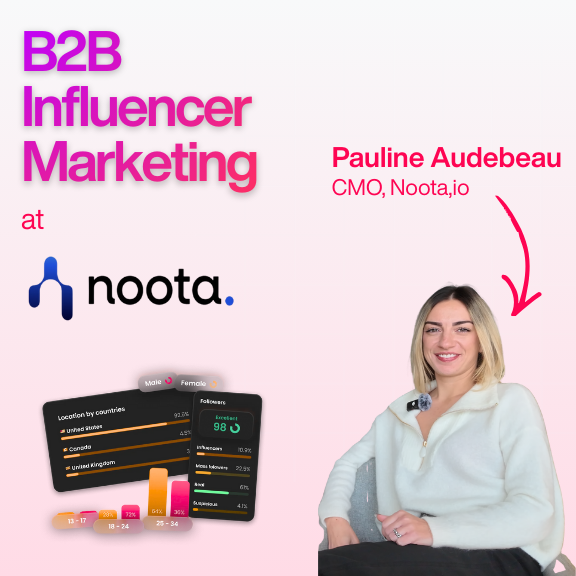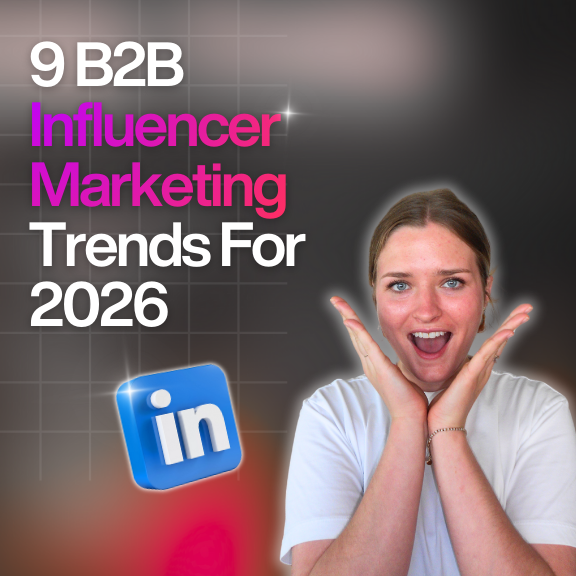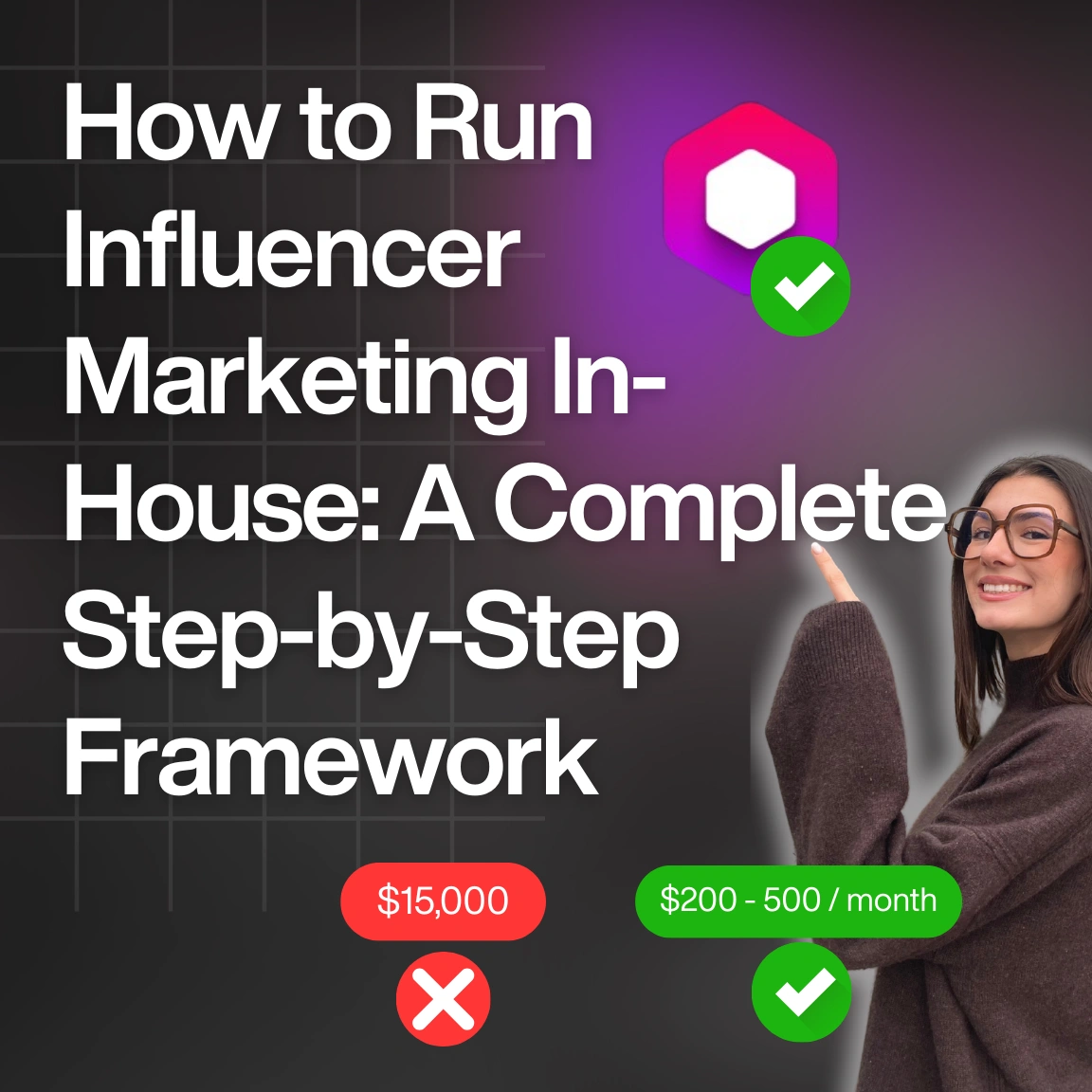Blog & Articles
Your ultimate ressource for the creator economy
Methodology & Rankings
About Favikon, rankings, tools & much more.
Insights
The recipe behind Favikon's viral & coveted rankings.
Free tools to power your influencer marketing workflows.
See Favikon users' success stories.
Get access to all Favikon rankings.
Become a Partner
Become an Affiliate
About the team behind Favikon
The place to talk creator economy, together


Featured Rankings

Here is the Top 50 Rising Video Creators on LinkedIn. Video is quickly becoming the platform’s most powerful format, with creators gaining more reach and engagement than ever. As Gen Z grows its presence and tools like BrandLink and Thought Leader Ads support content creation, LinkedIn is doubling down on video. This ranking, made in partnership with OpusClip, celebrates the creators leading this shift and aims to inspire anyone ready to start sharing through video.

Here is the Top 50 Rising Video Creators on LinkedIn. Video is quickly becoming the platform’s most powerful format, with creators gaining more reach and engagement than ever. As Gen Z grows its presence and tools like BrandLink and Thought Leader Ads support content creation, LinkedIn is doubling down on video. This ranking, made in partnership with OpusClip, celebrates the creators leading this shift and aims to inspire anyone ready to start sharing through video.
How to Create an Influencer Marketing Strategy That Drives ROI
Creating an influencer marketing strategy that delivers real ROI can be challenging, but with the right approach, it's entirely achievable. Follow this guide to develop a data-driven strategy that aligns with your goals and maximizes your campaign’s return.
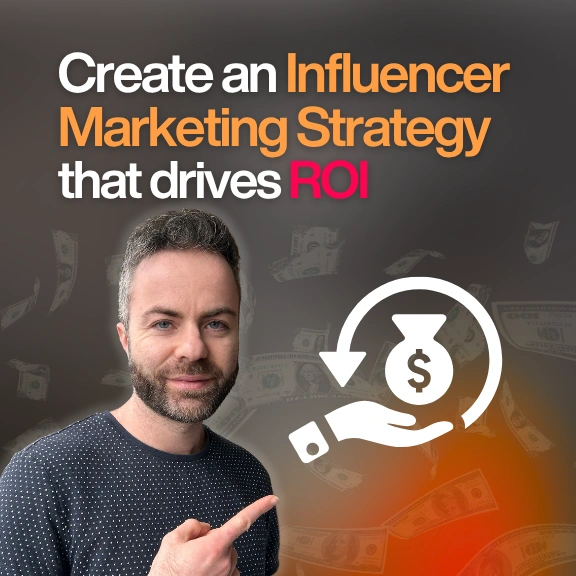
.png)

Josie Renna is a content strategy expert with a passion for helping creators navigate the ever-evolving digital landscape. Specializing in effective content creation techniques and platform-specific strategies, Josie provides insights to empower creators and brands to thrive online. With a deep understanding of algorithm dynamics and audience engagement, Josie shares actionable tips for optimizing content performance across various platforms.
Check Brand DealsHow to Create an Influencer Marketing Strategy That Drives ROI
In today's digital landscape, influencer marketing has evolved from a trendy marketing tactic to a powerful revenue-driving strategy. With the industry generating $236 billion in Earned Media Value (EMV) in 2024 and delivering an impressive 8.4x ROI on campaigns, brands can no longer afford to approach influencer marketing without a strategic framework.
Creating an influencer marketing strategy that drives measurable ROI requires more than just partnering with popular creators. It demands a data-driven approach, clear objectives, and systematic execution. Let's explore how to build a strategy that transforms influencer partnerships into tangible business results.
Setting Clear Goals and KPIs for Maximum Impact
The foundation of any ROI-driven influencer marketing strategy begins with establishing specific, measurable goals. According to Talkwalker's 2025 research, successful campaigns start with realistic objectives that align with broader business outcomes.
Defining Your Primary Objectives
Your influencer marketing goals should directly connect to your business needs. Consider these strategic approaches:
Brand Awareness Goals: If you're launching a new product or entering a new market, focus on metrics like impressions, reach, and brand mention volume. A realistic goal might be "achieve 2 million impressions and 50,000 brand mentions within Q1 2025."
Traffic and Engagement Goals: For businesses seeking to drive website visits or social media growth, set targets such as"generate 15,000 unique website visitors from influencer content" or "increase Instagram followers by 25% through influencer partnerships."
Revenue-Focused Goals: The most ROI-driven approach involves setting direct sales targets. For example, "generate $50,000 in sales from new customers acquired through influencer campaigns" provides a clear benchmark for measuring success.
Establishing Measurable KPIs
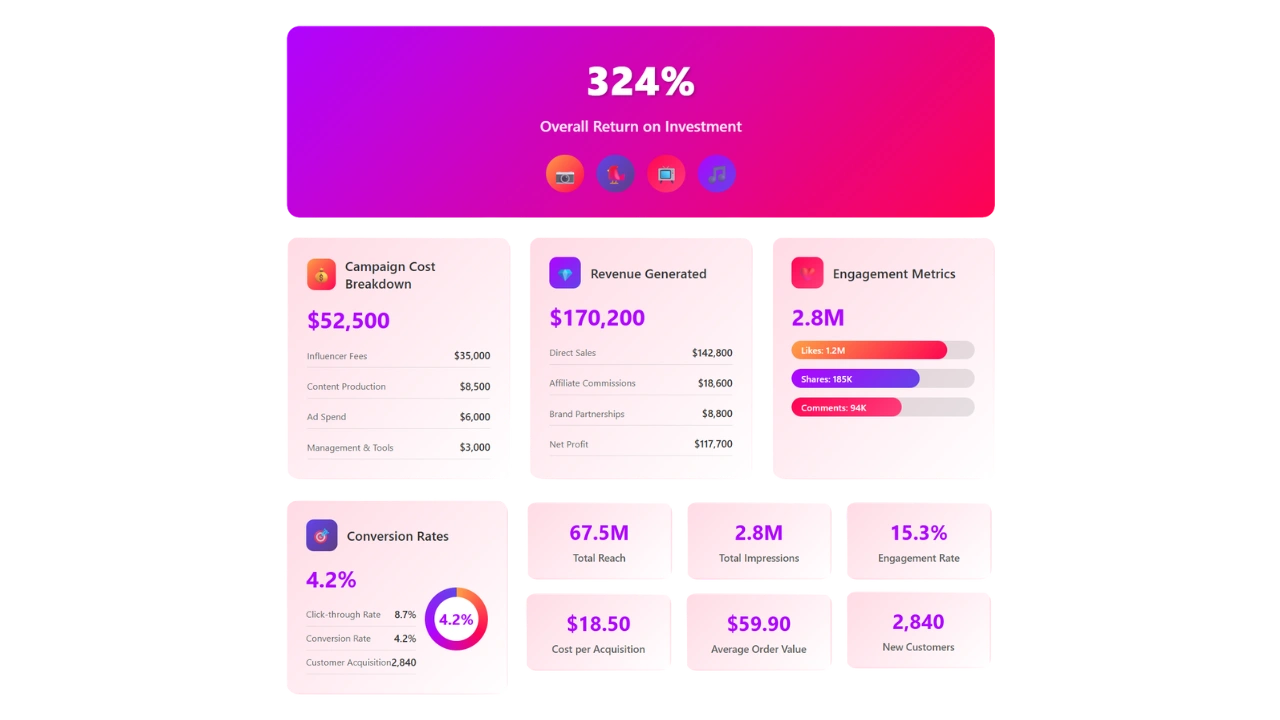
Industry expert Sarah Johnson from Influencer Marketing Hub emphasizes, "The key to ROI success lies in tracking the right metrics from day one. Brands that focus on vanity metrics often miss the real impact of their campaigns."
Your KPI framework should include:
- Engagement Rate: Aim for rates above industry averages (1.23% for Instagram Reels according to Shopify's 2025 data)
- Click-Through Rate: Track how effectively content drives traffic to your website
- Conversion Rate: Measure the percentage of influenced traffic that completes desired actions
- Customer Acquisition Cost: Calculate the cost of acquiring new customers through influencer partnerships
- Return on Ad Spend (ROAS): Monitor revenue generated per dollar spent on influencer marketing
Choosing the Right Influencers and Platforms
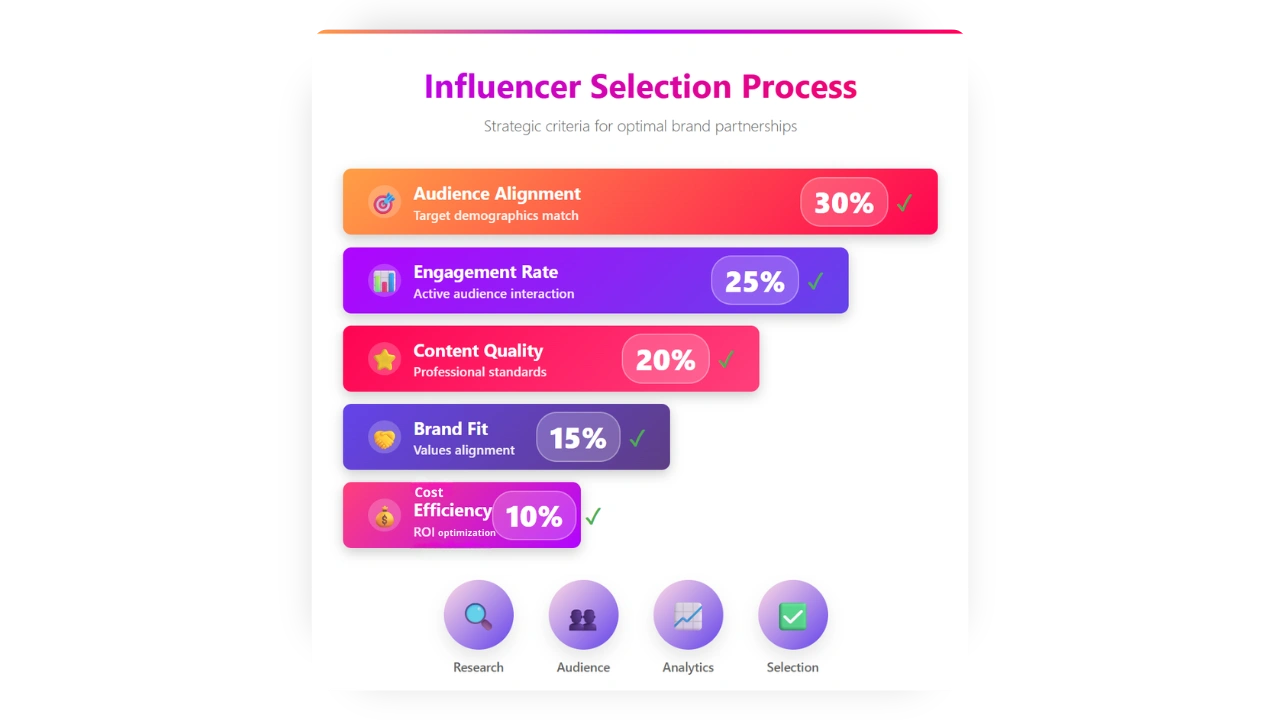
Platform selection and influencer partnerships significantly impact campaign ROI. Current industry data shows that 90% of brands favor Instagram, with 72% of marketers considering it their primary platform for influencer collaborations.
The Power of Micro and Nano-Influencers

While mega-influencers command attention, micro-influencers (10K-100K followers) and nano-influencers (1K-10K followers) often deliver superior ROI. These creators typically maintain higher engagement rates and stronger audience trust, translating to better conversion rates.
Marketing strategist David Chen from Talent Resources notes, "Micro-influencers often provide 3-5x better engagement rates than macro-influencers, making them incredibly cost-effective for ROI-focused campaigns."
Platform-Specific Strategies
Instagram: Leverage Reels for maximum reach and engagement. The format consistently outperforms other content types with higher impression rates and engagement.
TikTok: Focus on trend-based content and challenges that encourage user-generated content, amplifying your campaign's organic reach.
YouTube: Invest in long-form content for products requiring detailed explanations or demonstrations, as these videos often drive higher conversion rates.
Authenticity and Brand Alignment
Successful influencer partnerships require genuine brand alignment. Look for creators who naturally use products similar to yours and whose audience demographics match your target market. This authenticity translates directly to higher conversion rates and better ROI.
Leveraging Data and Analytics for ROI Optimization
Data-driven decision making separates successful influencer campaigns from expensive experiments. Influencer Hero's research emphasizes the importance of implementing robust tracking systems from campaign launch.
Essential Tracking Mechanisms
Unique Promo Codes: Assign individual discount codes to each influencer to track direct sales attribution accurately.
UTM Parameters: Use specific UTM codes for all influencer-shared links to monitor traffic sources and user behavior in Google Analytics.
Affiliate Links: Implement affiliate tracking to measure both immediate conversions and longer sales cycles.
Platform Analytics: Utilize native platform analytics alongside third-party tools for comprehensive performance insights.
ROI Calculation Framework
Calculate your influencer marketing ROI using this formula:
ROI = (Revenue Generated - Campaign Cost) / Campaign Cost × 100
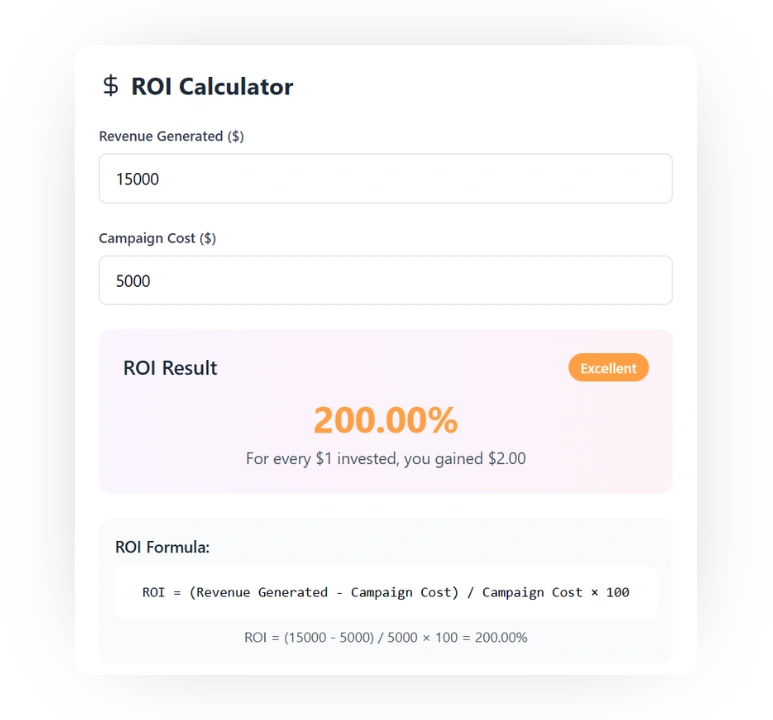
For a comprehensive analysis, also track:
- Customer Lifetime Value (CLV) from influencer-acquired customers
- Brand awareness lift through surveys and brand mention tracking
- Engagement quality beyond basic metrics
Creating Engaging, Authentic Content That Converts
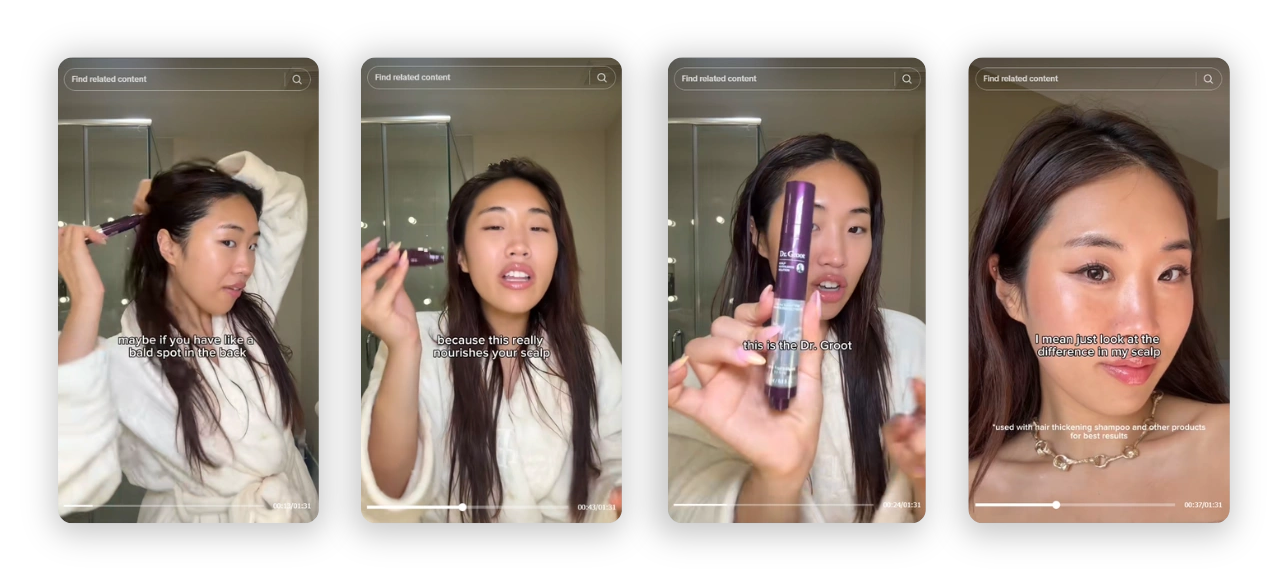
Content quality directly impacts campaign ROI. Successful brands focus on storytelling that resonates with target audiences while maintaining authenticity.
Content Strategy Best Practices
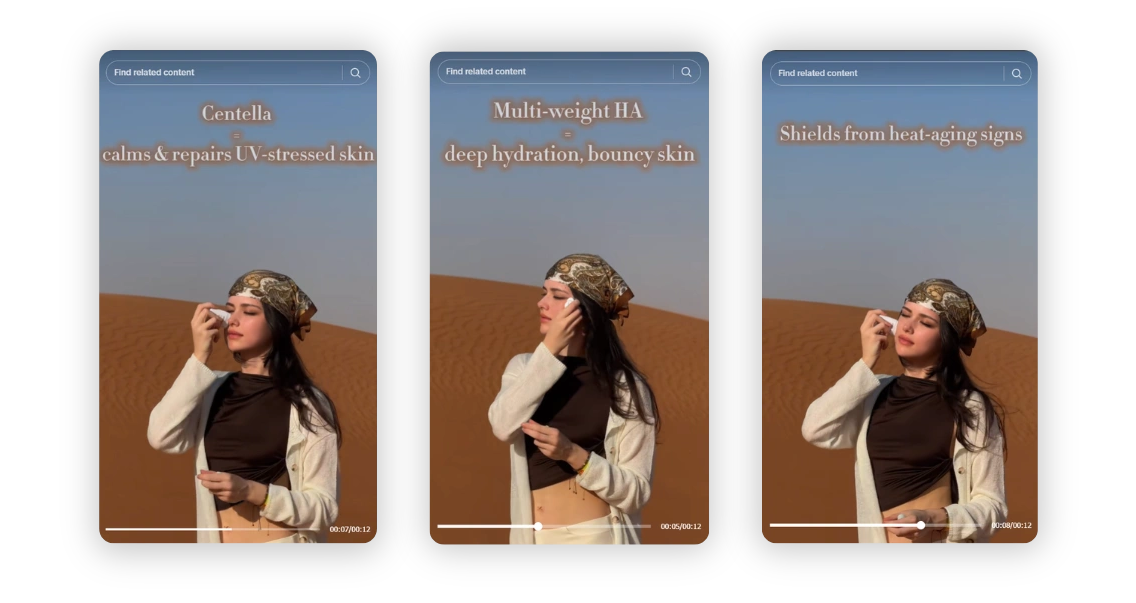
Collaborative Content Creation: Partner with influencers to create content that feels authentic to their audience while effectively showcasing your product's benefits. Avoid overly promotional content that audiences immediately recognize as advertising.
Multi-Format Approach: Diversify content across formats - Stories for behind-the-scenes content, Reels for entertainment, and feed posts for detailed product showcases.
User-Generated Content Integration: Encourage influencers to create content that inspires their followers to share their own experiences with your brand, amplifying reach organically.
Case Study: Little Moons' TikTok Success
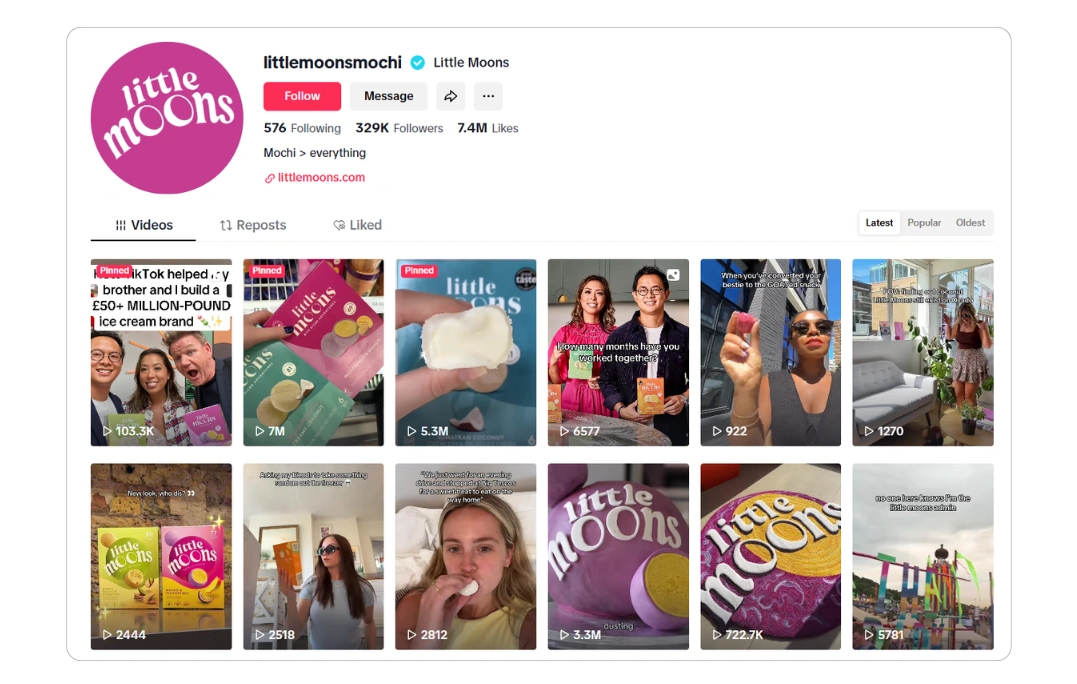
Little Moons' TikTok campaign demonstrates an effective content strategy. By partnering with food influencers to create engaging, trend-based content around their mochi ice cream, they generated millions of views and drove significant sales increases across retail partners.
Building Long-term Relationships for Sustained ROI
One-off influencer partnerships rarely maximize ROI potential. Building long-term relationships with high-performing creators creates sustained value and improved campaign efficiency.
Benefits of Long-term Partnerships

Reduced Onboarding Costs: Established relationships eliminate the need for repeated briefing and negotiation processes.
Improved Content Quality: Influencers who understand your brand deeply create more authentic, effective content.
Audience Trust Building: Repeated endorsements from trusted creators build stronger audience confidence in your brand.
Better Performance Data: Long-term partnerships provide more comprehensive performance data for optimization.
Marketing director Lisa Rodriguez from a leading beauty brand shares, "Our long-term influencer partners consistently deliver 40% higher conversion rates compared to one-off collaborations. The investment in relationship building pays dividends."
Measuring and Optimizing Campaign Performance
Continuous optimization ensures your influencer marketing strategy evolves with changing market conditions and audience preferences.
Performance Monitoring Framework
Weekly Performance Reviews: Analyze engagement rates, traffic, and conversion data weekly to identify trends and optimization opportunities.
Monthly ROI Assessments: Calculate comprehensive ROI, including both direct sales and brand value metrics, on a monthly basis.
Quarterly Strategy Adjustments: Review overall strategy quarterly, adjusting influencer mix, content approaches, and budget allocation based on performance data.
Optimization Strategies
A/B Testing: Test different content formats, posting times, and call-to-action approaches to identify the highest-performing combinations.
Budget Reallocation: Shift budget toward the highest-performing influencers and platforms based on ROI data.
Content Format Evolution: Adapt content strategies based on platform algorithm changes and audience engagement patterns.
Implementing Your Strategy with Favikon
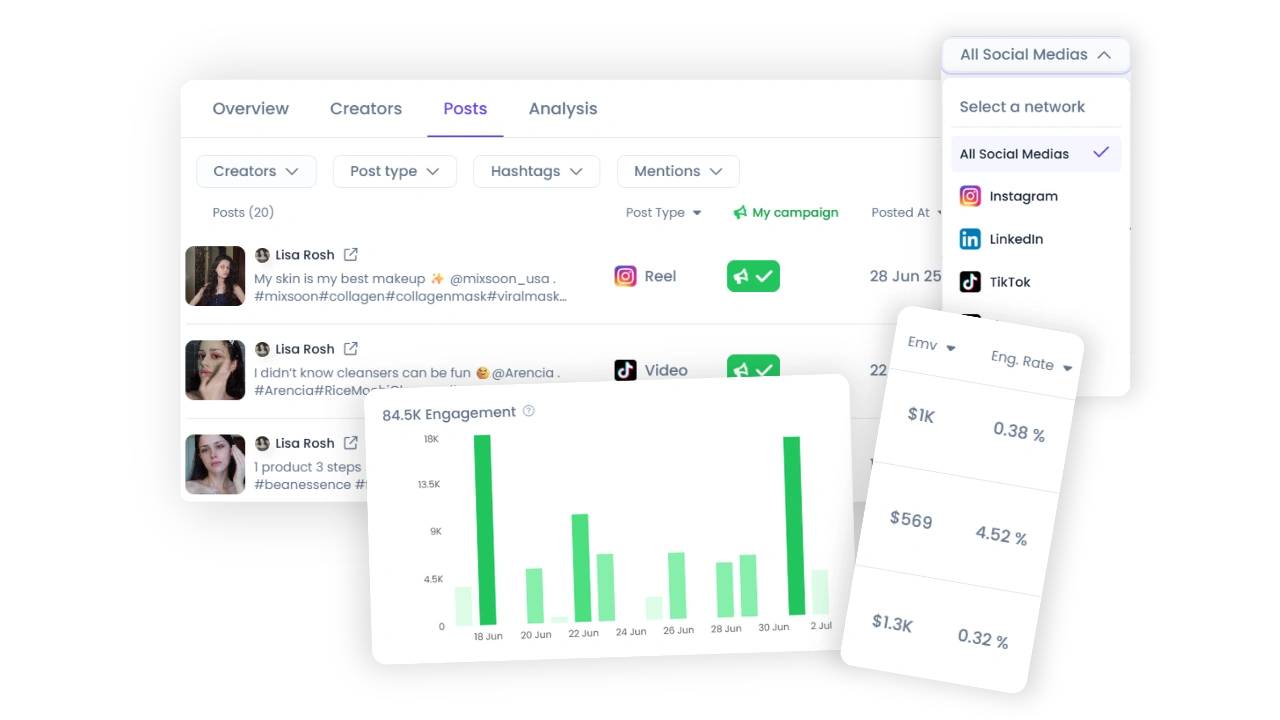
Ready to implement a data-driven influencer marketing strategy? Favikon's comprehensive platform provides the tools needed to identify high-ROI influencers, track campaign performance, and optimize your strategy for maximum returns.
Favikon's advanced analytics help you discover influencers with authentic engagement, track campaign ROI in real-time, and build long-term partnerships that drive sustained business growth. Start building your ROI-focused influencer marketing strategy today.
Key Takeaways for ROI Success
Creating an influencer marketing strategy that drives ROI requires strategic planning, careful execution, and continuous optimization. Focus on setting clear, measurable goals, choosing authentic influencer partners, implementing robust tracking systems, and building long-term relationships.
The brands achieving 8.4x ROI from influencer marketing aren't relying on luck; they're following systematic approaches that prioritize data-driven decision making and authentic audience connections. By implementing these strategies, your brand can join the ranks of businesses transforming influencer partnerships into significant revenue drivers.
Also See 👀
🏆 HOW TO SET CLEAR GOALS & KIPs FOR YOUR INFLUENCER CAMPAIGNS
LAUNCH AND MANAGE INFLUENCER CAMPAIGNS WITH EASE
HOW DOES FAVIKON RANK INFLUENCERS?
Related Articles
See all the articlesResources











.png)
